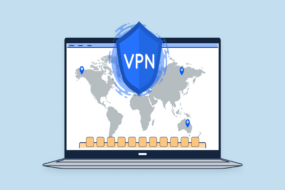Organizations primarily relied on the conventional perimeter-based security paradigm a few years ago to safeguard their networks, systems, and confidential information. But with today’s cultivated assaults using methods like application-layer DDoS attacks, advanced persistent threats, and zero-day vulnerabilities, such a strategy is no longer enough. Because of this, many businesses are using the zero trust approach, a security paradigm predicated on the idea that a person or device should never be trusted, whether within or outside the company’s network.
Zero trust security seems like a more proactive approach to security, but putting the solution into practice has several drawbacks that might expose an organization’s security flaws before they arise.
Network segmentation, access control, and least-privileged access restrictions are the fundamental elements of zero trust. Although employee behavior may be improved via best practices, an organization’s security architecture can be strengthened by securing access to protected apps using technologies like device trust solutions.
What Exactly is Zero Trust?
A security architecture known as “zero trust” demands constant validation and verification of all users, both internal and external, before allowing them access to network resources. The zero-trust network architecture incorporates continuous authentication, and its central tenet is that a network cannot be deemed “trusted” until verification is obtained.
The efficacy of conventional security models and our understanding of a trustworthy network have been severely called into question by the dynamic nature of today’s multi-dimensional cloud network.
You can better appreciate the value of zero trust architecture if you understand cloud computing. There are four main categories of cloud computing: multi-cloud, hybrid, public, and private. Organizations today are unlikely to choose one of these and disregard the others. Rather, companies will likely need to utilize all of them in addition to their private networks, resulting in networks and databases overlapping.
Data transfers between several networks and user devices will occur when users access numerous networks simultaneously. Because any device verified as “trusted” might be infected with malware or other similar threats and disseminate the harmful actor over the overlapping networks, the likelihood of data breaches in older systems will increase. To lower risk via continuous authentication, the system adheres to zero trust rules rather than “assumes” that any device is “trusted” or secure.
Best Practices for Zero Trust
So, how to implement zero trust? Your zero-trust cybersecurity framework may be designed and implemented with the assistance of the following zero-trust recommendations. They can assist you in putting up a solid plan for breach avoidance and data loss prevention (DLP). This is a how-to guide for implementing zero trust.
- Begin With Clear Business Goals
To improve cybersecurity, analyze specific business requirements and implement the Zero Trust philosophy. This approach is beneficial for any company but is most effective when identifying specific risks to address. Start by identifying critical areas with previous cybersecurity incidents or issues, as this will guide the patching process, enhance cybersecurity status, and reduce the need for additional resources.
- Map Out Your Network Assets
Understanding your user base, devices, and services can aid in creating a Zero Trust architecture. A thorough review of network assets should identify data needs and potential risks. Internet-connected assets are the most risky due to remote access vulnerabilities. Assessing internet-connected assets helps identify vulnerabilities. Misconfigurations in current hardware can also cause harm, highlighting the importance of understanding a secure network’s user base, devices, and services.
- Develop a Strong Device Identity
Device identification should serve as a solid and distinct foundation for authentication, authorization, and other security measures. Instead of relying just on user management, you should make it feasible to detect devices that connect to your network.
Additional components might be added to aid in the identification of co-processors, software-based keys, and other solutions. You may give a substantially high level of device authentication trust, depending on your ability to oversee the devices.
- Implement Centralized Monitoring
Ensure all data from multiple monitoring tools is accessible from a single dashboard to provide a comprehensive view of the enterprise’s network, preventing potential issues like missed or overlooked malicious activity reports. Automation can also help detect suspicious activities, but assessing each gadget’s environment is crucial to ensure compliance with security regulations.
- Do Not Trust Your Local Network
Adopting the Zero Trust architecture implies that it applies to your internal network. This strategy implies that no channel is secure and requires strong authentication at each access point.
Trust may also be established based on the devices and services utilized in your network. Internal transactions should also be done using secure protocols, such as TLS. This avoids several assaults against your company, such as man-in-the-middle (MitM) attacks and DNS poisoning.
- Segment Your Network
The Zero Trust strategy requires you to divide your network into smaller components. Segmenting your entire attack surface is designed to safeguard you if your defensive systems fail and an attacker infiltrates your perimeter.
You may use any number of tools to assist you. One of the finest approaches would be to build a microcosm for your unique group using restricted resources. The key principle is that only the data required for performing the primary job responsibilities should be exposed. This will avoid overexposure, which might cause problems when dealing with insider threats.
- Combine Different Verification Techniques
Zero Trust security rules should focus on identifying threats and strengthening weak areas and should be applied to all network workloads. Using various security technologies, such as IoT, ensures devices comply with company policies. Proper traffic flow is crucial, as unchecked traffic could lead to an attack vector within the company. Ensuring proper traffic flow is a significant cybersecurity concern.
Conclusion
The traditional perimeter-based security paradigm can no longer defend enterprises from today’s assaults. Many people are adopting the zero trust strategy, which demands continual verification and validation of all network users. This proactive system provides a proactive response to cyber threats.
To successfully implement zero trust, organizations must define their attack surface, secure sensitive data and critical applications, and follow best practices such as clear business objectives, mapping network assets, creating strong device identities, centralized monitoring, and network segmentation. Combining numerous verification techniques and establishing zero-trust regulations based on the identified main risks are critical steps toward strengthening cybersecurity defenses.
In case you missed!











